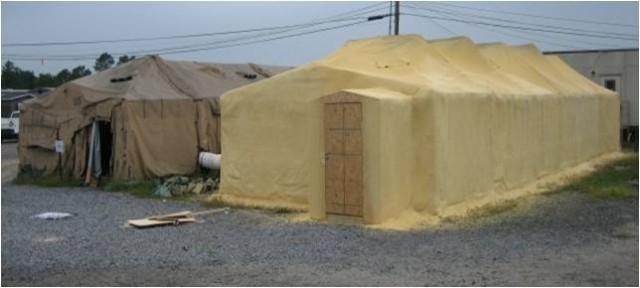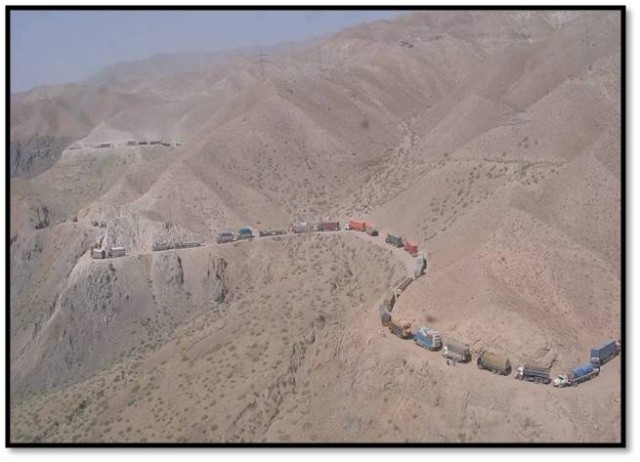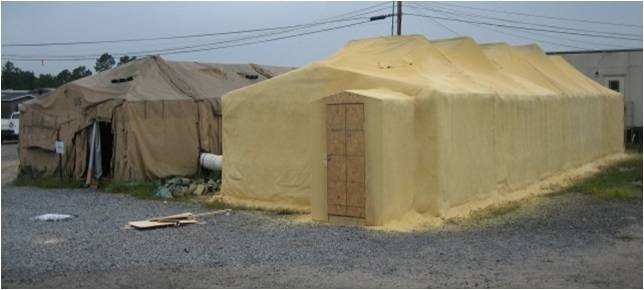WASHINGTON (May 7, 2009) -- The Army is no stranger to environmental concerns and energy consumption. While some energy-efficient technologies are still a few years away from use, the Army is taking steps now to save fuel by revitalizing a 40-year old insulation method. But this method does more than decrease fuel consumption; it also helps save lives.
Brig. Gen. Steve Anderson, director of operations and readiness at the Department of the Army Headquarters logistics office, is confident this technology has saved lives by reducing the number of fuel trucks on the roads in Iraq.
"Every gallon of fuel saved at installations and forward operating bases in theater means a lower fuel usage rate, thus resupplies don't need to happen as often," said Anderson. "Less resupply needs means fewer trucks on the road transporting the fuel, and fewer drivers risking their lives on those dangerous roads."
The insulation method responsible for these benefits is called closed-cell spray polyurethane foam, or tent foaming. Essentially, a temporary structure, like a tent, is covered with two inches of foam that hardens creating a barrier between the weather outside and the temperature inside the tent. A Government Accountability Office report documents that the application of foam insulation can reduce power use between 40 and 75 percent. The Army estimates it has reduced fuel costs by $3.6 million every day.
Anderson was the senior logistician in Iraq when the foam insulation idea was brought forward.
"We recognized that there would be immediate payoff by taking action on this project," said Anderson. "Some of the wind and solar generation efforts presented would take a little additional time to be realized. But we could take advantage of the foam insulation right away."
The gym at Camp Victory, Iraq, presents one of the most dramatic examples of how well foam insulation works. The Camp Victory gym is housed in an aviation maintenance facility, basically an extremely large tent. Before "foaming" the tent, eight industrial air conditioners running full time kept the inside of the tent at a temperature of 92-93 degrees Fahrenheit - cooler than outside, but far from comfortable, especially when working out. After applying the foam insulation, only two air conditioners were needed to keep the temperature at 70 degrees Fahrenheit.
Applying foam insulation to facilities like these not only reduces the need for power, but also improves Soldiers' quality of life while deployed. They can work, sleep and eat in a more comfortable environment - a morale booster for sure.
The Army has a $95 million contract to foam up to nine million square feet of building space in Iraq, of which about 60 percent has been completed. The Army also let a $29 million contract to foam structures in Afghanistan. So far, 150,000 square feet have been foamed. It takes a mere 26 days to recoup the costs of the foaming through the fuel savings.
U.S. Army Central Command plans to to issue a directive in June that all structures in theater that are expected to remain standing for more than six months must have some type of insulation, which will most likely be foam.
While convoys in Iraq face the dangers of ambushes and IEDs, convoys in Afghanistan face additional challenges like steep terrain and an undeveloped road system.
"The road network in Afghanistan is nearly opposite to Iraq, which has 6 and 8 lane highways throughout a lot of the country. In Afghanistan you are essentially looking at improved goat trails," said Anderson. "There is really, really difficult terrain to get through, which I think makes the importance of this effort even greater."




Social Sharing